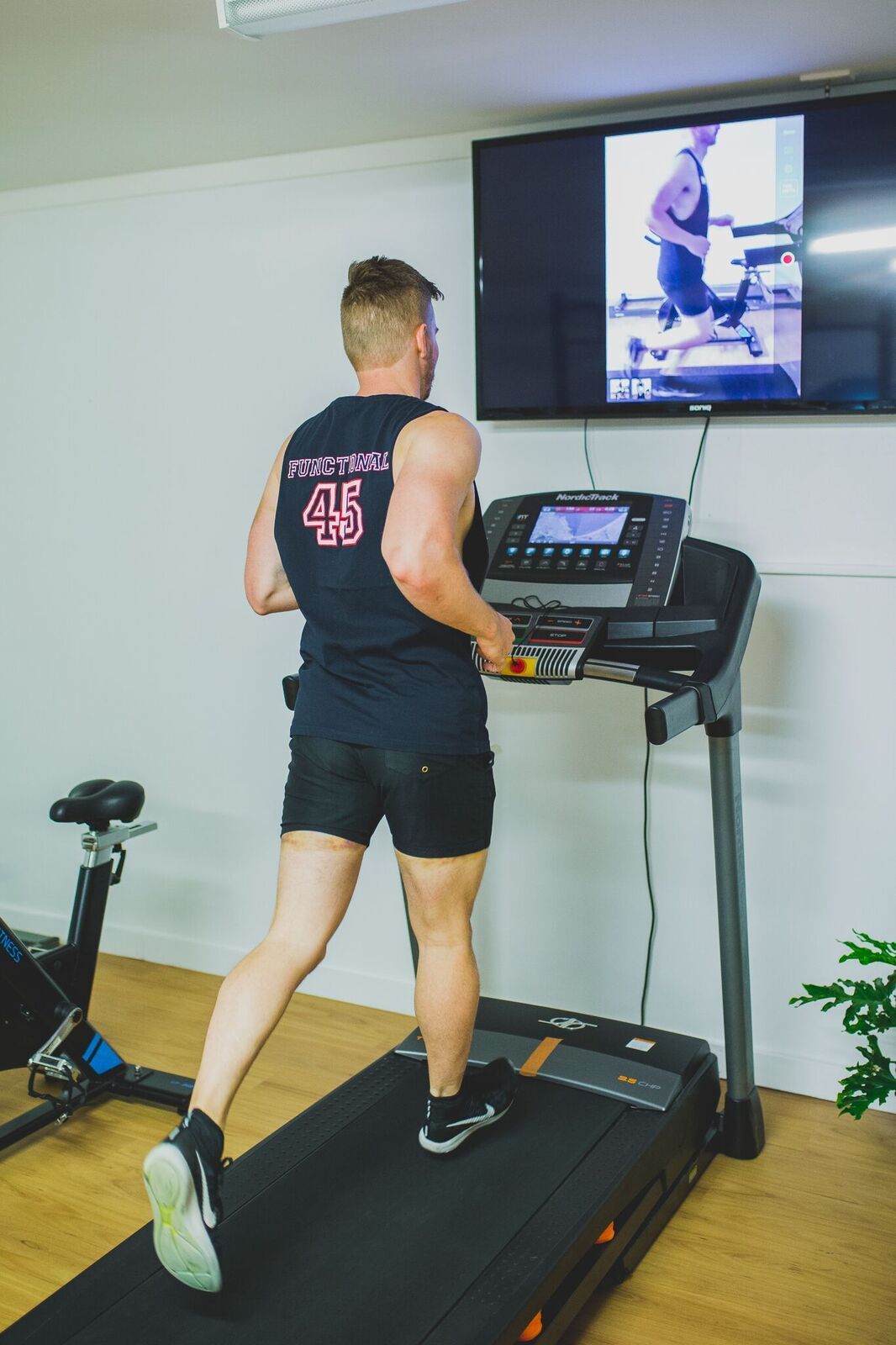
To coincide with November, held to raise awareness about prostate cancer, testicular cancer, men’s mental health and suicide prevention throughout November, APA Women’s, Men’s and Pelvic Health group members Dr Jo Milios and Jason Crow present five facts about men’s health.
1. Pelvic floor exercises
Australia wide, one in seven men will be diagnosed with prostate cancer, and there is a strong link to a positive family history of cancers in both the male and female genetic pathways (prostate.org.au). In fact, there is a one in two risk a man will be diagnosed with prostate cancer should a first-line male relative have the disease, and a one in four risk should there be any breast, ovarian or uterine cancer in the female line (Mitra et al 2011). Talking about it and knowing your family history is imperative to early diagnosis, with 97 per cent of men diagnosed early expected to survive at least five years.
Pelvic floor exercises, both prior to and following a radical prostatectomy or radiation treatment, may greatly assist in the recovery of continence (Patel et al 2013) and erectile function (Prota et al 2012). Start by relaxing the belly and buttock muscles, then gently squeeze the front urinary passage as if stopping the flow of urine. Next, try to gently lift the testicles and retract the penis (Stafford et al 2015). Repeat this 10 times quickly for one second each, and then 10 times slowly up to 10 seconds each, with a similar rest period to assist with both reflexive and endurance tasks required of the pelvic floor. Try three sets per day initially. This will help to enhance continence control during sit to stand, cough (Miller et al 1998), bend and also to ‘hold on’ for bladder, bowel and sexual function. With three months of training, the pelvic floor muscles should improve, but if after 12 months the issues remain, further advice should be sought.
2. Erectile dysfunction

Erectile dysfunction (ED) is described as the persistent inability to achieve or maintain an erection firm enough or lasting long enough for sexual performance (Hackett et al 2017). In 1995, it was estimated to affect 152 million men worldwide, with the prevalence expected to double by 2025 (Aytac et al 1999). Several studies have assessed the epidemiology of ED, with the renowned Massachusetts Aging Study demonstrating ‘increased age’ as the most significant factor. At age 40 years, approximately 40 per cent of men are affected, a rate that increases by 10 per cent every decade to age 70 (Feldmann 2000).
Increasingly, a younger generation of males are seeking advice and treatment for ED as they battle with issues of self-esteem and anxiety, often leading to chronic pelvic pain syndrome and hypertonicity of the pelvic floor muscles (Cohen et al 2016). Pelvic physiotherapy can be prescribed to any male suffering with ED, with a combination of either strengthening and/or relaxing of the pelvic floor muscles as these are all part of the normal erection and ejaculatory cycles. Remember, too, that ‘heart health’ and ‘hard health’ are linked, and being aware of what’s normal for each individual is paramount.
3. Peyronie’s disease

Peyronie’s disease (PD), or curvature of the penis, is a disorder that affects at least nine per cent of the male population and may be another early warning sign of cardiovascular disease (Mulhall et al 2004). Thought to arise due to formation of inelastic scar tissue that creates plaques in genetically susceptible individuals, some men are able to pinpoint an incident relating to onset (eg, sexual activity causing trauma). But for most men, the first sign of any issue may be a palpable area of scar tissue in the flaccid penis which results in pain, penile deformities and shortening that is generally only seen in the erect state (Kalokairinou et al 2018).
Probable causes include infection, autoimmune diseases, local trauma and generalised arterial disease. The peak incidence of PD occurs around 55–60 years of age and two-thirds of men with PD possess risk factors for arterial disease (Love et al 2017). Unfortunately, most men with the condition will find their symptoms worsening over time, with only 12 per cent expected to improve without treatment. Given the embarrassment and challenge of seeking help, many men leave the opportunity for diagnosis too late, after which time only surgical treatment may be an option for cure.
Early diagnosis, confirmed with Doppler scans, will help determine treatment options with physiotherapy applications such as therapeutic ultrasound and the provision of vacuum pumps providing helpful options in the early stages.
4, Chronic pelvic pain syndrome
‘Prostatitis’ was the term used for way too long when it came to diagnosing pain in men’s private parts. For decades, any problem linked to the male pelvis was described as exactly this and was thought to be caused by infection or inflammation of the prostate gland. However, with only three per cent of men responding to antibiotics for the condition and an average 87-month wait between the onset of symptoms and an accurate diagnosis, prostatitis has been very much misunderstood (McNaughton Collins et al 2001).
For a problem that affects two to 16 per cent of males and is the most common urological condition in men under 50 years (Krieger et al 1999, Smith 2016), it is surprising that prostatitis has only recently been accurately defined and classified.
For those working in male pelvic health, the National Institutes of Health’s chronic prostatitis symptom index (NIH-CPSI) provides a helpful diagnostic tool when patients arrive with a vast range of sensory, motor and autonomic presentations, resulting in pain and dysfunction of the urogenital area (Litwin et al 1999). Significantly, more than 90 per cent of all prostatitis cases are now diagnosed as chronic pelvic pain syndrome (CPPS) (Smith 2016), for which a combination of pelvic health and musculoskeletal physiotherapy can offer a range of treatment options.
Physiotherapists treating this condition typically employ strategies including manual therapies, pain science, yoga-based gentle exercise and breath work. CPPS is a condition all physiotherapists should look out for, as too many patients suffer needlessly for far too long.
5. Urinary urgency
Many men can experience urgency symptoms post-prostatectomy. This can be caused by tissue irritation or altered urinary habits because of postoperative incontinence (eg, adopting a ‘just in case’ voiding strategy). Urinary urgency is described as a strong and sudden desire to urinate and can be associated with needing to go to the toilet more frequently. Physiotherapy management, including bladder retraining, simple lifestyle modifications and pelvic floor exercises may help decrease these symptoms.
The goal of bladder retraining is to increase the time between voids—starting with five minutes at first. Simple strategies include:
- contracting pelvic floor muscles. Lift and imagine stopping the flow of urine and hold until the urge to void ceases
- distraction. Direct attention away from the bladder such as doing a crossword or checking emails
- positional changes. Curling toes or crossing legs can occupy the same nerve pathway to the brain as the bladder, providing a distraction to decrease the urge.
Other lifestyle changes include trying to store more urine in the bladder, maintaining appropriate fluid intake (1.5L H2O/day) and moderating bladder irritants such as caffeine and alcohol. Through these options, men can improve their symptoms and find ways to improve and maintain quality of life.
Unsure where to begin to assist your heath as a Male? Schedule a confidential assessment with one of our professionals today.



